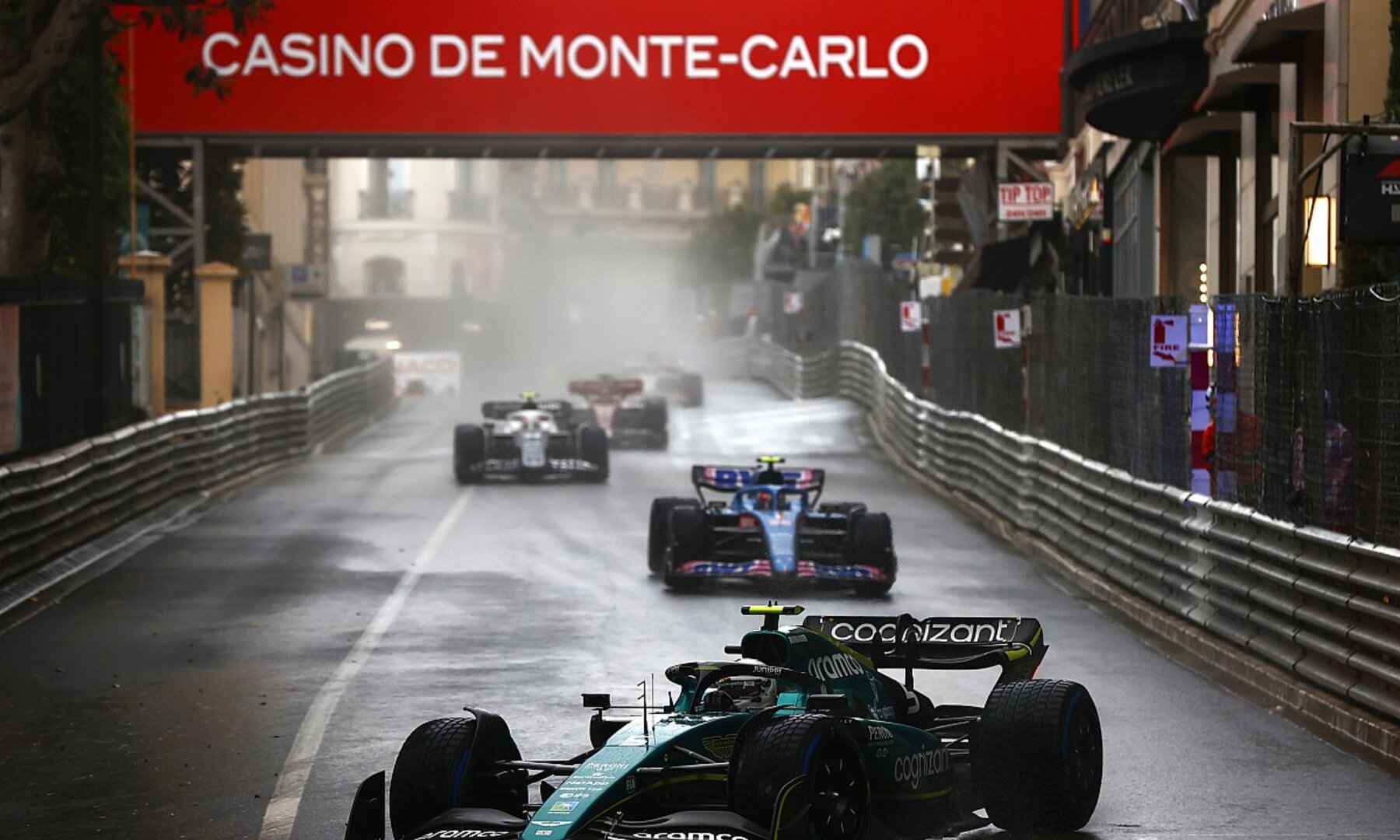Formula 1: What strategies to expect from teams at Monaco GP 2023?

Sergio Perez, who has already won two races this season, came out victorious in Monaco last year.
The crown jewel of Formula 1, Monaco GP, sets a unique precedent for its competitors. It's a tight street circuit- where overtaking is ridiculously notorious. The Circuit de Monaco is the shortest track on the F1 calendar. Compensating for its 3.337 km (2.074 miles) track length- the rulebook allows the total race distance to get shortened from the 305 km norm to 260 km with only 78 laps instead of 92. Tied to an overall reduced track- the layout makes Monaco GP probably the most challenging race in overtaking, with the factor of DRS remaining at its lowest influence.
A tight pit lane sees drivers succumb to a 60 km/h speed limit between tightly located garages, making the stoppages very slow for mandatory tire changes and infrequent alterations. Encompassing this factor alongside operating slowly on track with the lowest average standing at 168 km/hr, Monaco GP relies on its retained "principality" status more than racing.
For strategists, attaining pole positions or staying as further ahead for Sunday's grid becomes much more pivotal in Monaco GP than other races. The finishes here often replicate the order in which the drivers qualify on Saturday. Drag is not a concern, so every team will get modifications in their cars to attain maximum downforce on the slowest track of the year.
Overcuts or undercuts?
Considerable decisions are often made on the go by race engineers in deciding their pit stop strategies. Overcuts against undercuts can result in huge payoffs. So, what has historically favored the drivers in recent years?
Strategies will focus predominantly on tire models and experience critical differences between the compounds and degradations. Calculations about attaining the fastest and optimal pit stop are crucial. Attempting an undercut by stopping too early can ruin someone's race by getting stuck behind traffic.
So, undercuts are always a gamble, while overcuts remain desirable. Take 2021, for example, where Sergio Perez and Sebastian Vettel were on over-cut strategies. The Mexican gained an advantage on three cars by delaying his stop by four to six laps later and putting his machinery's prowess with pace in clear air.
Lance Stroll opted to start on hard rubber from the 13th spot on the grid and was out for a long time on his first stint. It yielded him a P8 finish with points. Avoiding traffic is the key to success in terms of crafting strategies here.
Team games, communication, and volatility
Essentially the midfield drivers should look into working in tandem with their teammates as it can bear fruits for double points at Monaco GP.
In 2019, McLaren used Lando Norris to create a gap in behind so that Carlos Sainz, driving in front, could complete his pitstop and not lose his position. Furthermore, the Spaniard jumped ahead by two spots as two other cars made a stop during the Safety Car period and got stuck behind Norris.
Subtle communication between the race engineer and the driver can make or break a race. In 2016, Daniel Riccardo led the race when he came in for a spontaneous pit stop. His tire set was not ready, so the pit crew fumbled to send the car out. Losing on ten extra seconds than an average pitstop, Red Bull's miscommunication amongst themselves gifted Lewis Hamilton with a victory.
Preparing alternative strategies
On-track incidents are a common theme here. Unforeseen circumstances can demand race control to call for a Virtual Safety or a Safety car. Traffic or yellow or red flags can hamper any preplanned status. So, having alternative strategies based on weather changes with backup plans for unforeseen circumstances proves to be a key factor for teams around the paddock.
More than any race around the year, anything can happen at Monaco GP. Teams should create counter strategies to their traditional ones to fall back on. Those action plans can make all the difference between winning a race or losing it.
Where passion meets insight — blending breaking news, in-depth strategic analysis, viral moments, and jaw-dropping plays into powerful sports content designed to entertain, inform, and keep you connected to your favorite teams and athletes. Expect daily updates, expert commentary and coverage that never leaves a fan behind.
- Formula 2 2026: Kush Maini joins ART Grand Prix for his fourth F2 season
- Formula 4 Indian Championship: Battle for title set to unfold in high-stakes Chennai season finale
- Formula 1: Six instances Drivers' Championship was decided in last race
- Formula 1: Top six drivers with most wins at Abu Dhabi GP
- F1 Abu Dhabi GP: List of all winners in history
- Formula 1: Top six drivers with most wins at Abu Dhabi GP
- Lando Norris’ complete record at F1 Abu Dhabi GP
- F1 Abu Dhabi GP 2025: Preview, weather, schedule, start time, how to watch & more
- Formula 1 Title Scenarios: What Lando Norris, Max Verstappen & Oscar Piastri need to win F1 title in Abu Dhabi?
- Formula 1: List of Indians who have been part of F1 in various capacities